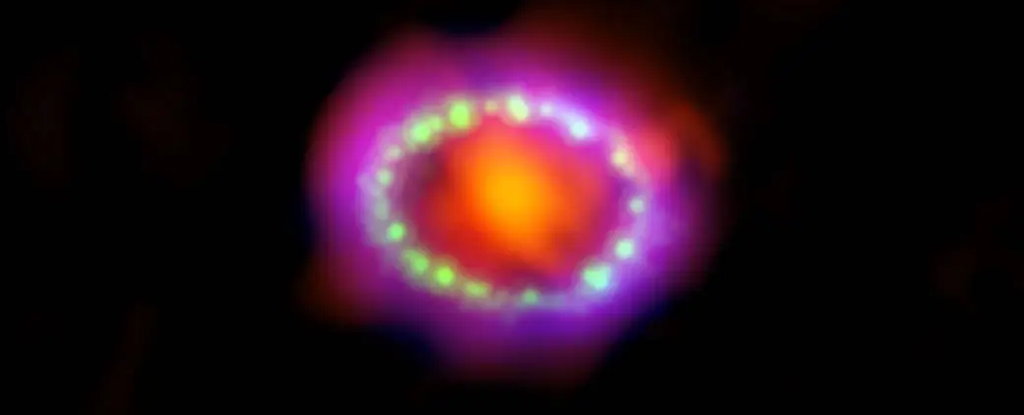Connecting our dream worlds to our conscious realities might be entirely possible, according to emerging research.
A new study by three researchers from the US neurotechnology company REMspace has shown with a bit of training, some of us might be able to react and respond to devices around us while we are ‘lucidly’ dreaming.
Lucid dreaming is the ability to recognize you are in a dream while you are in it. It’s a trainable skill, although about half the population has experienced the phenomenon spontaneously.
First verified by scientists in 1975, lucid dreaming has intrigued researchers ever since. One of its most fascinating possibilities has now been put to the test.
In a rudimentary experiment, five practiced lucid dreamers (including two of the researchers) were able to control the movements of a virtual avatar from their dream state in reaction to LED triggers shone through their closed eyes.
In the thick of rapid eye movement sleep (REM), participants maintained control over a virtual cybertruck, using muscle contractions in their limbs to intentionally avoid obstacles represented by bright flashes of light.
Though the participants didn’t actually dream they were driving, the basic concept of responding to cues while otherwise asleep could lead to new ways of bridging the space between dream-states and the waking world.
In REM sleep, most muscles are largely paralyzed, but during lucid dreams, micro-contractions can still be made. The California neurotechnology startup REMspace developed special equipment that can detect tiny twitches of leg and arm muscles during sleep.
Before participants could start driving cars in their dreams, however, first they had to be taught how to respond while awake.
The group was trained to control the movements of a virtual car on a screen with their eyes shut. If the car needed to turn to avoid an obstacle, two lights were cast onto the closed eyes of participants.
A twitch of the left or right arm would then turn the virtual car in that respective direction. Whereas the tensing of both legs would put the pedal to the metal.
Once an obstacle was successfully avoided, the two lights were switched off.
When participants had the system figured out, it was time to try it in their sleep. Researchers confirmed individuals were in REM sleep from electrodes on their skull.
From their dream state, participants let researchers know they were ready to drive by making at least three consecutive eye movements to the left and right.
The car’s engines were then started up.
“After the avatar was activated, participants received obstacle signals immediately if there were any obstacles in front of the object,” explain researchers at REMspace in a peer-reviewed paper.
“The participants needed to run, squat, or tense their quadriceps and then make turns using their arms if an obstacle appeared.”
Upon waking the next day, participants had to verbally report their experience, explaining how they responded to the task while asleep.
Ultimately, each participant tried their hand at driving the virtual car, and 28 appropriate turns were made in total.
But it was tricky work, even for experienced lucid dreamers.
One of the participants slipped into lucid dreaming five times in three nights, but only twice did they make an attempt to drive the car. The first time, they made two controlled turns, then drove the car straight for a bit, before waking up. The next time they took a few controlled turns and a few unnecessary ones, but they woke up from the flashes of light.
Another participant managed to pull off 17 controlled turns to avoid virtual obstacles while sleeping. One time, though, their legs went numb, and they couldn’t contract their muscles.
Researchers at REMspace suspect that most people could be trained to achieve similar feats with the right guidance. In another recent study, the same team taught one lucid dreamer to twitch their muscles to send ‘voice commands’ to their smart house. In their sleep, they were able to operate lights, an electric kettle, and a radio.
The newest study provides a potential proof of concept that lucid dreamers can “receive feedback” on the status of a system and “react to it appropriately.”
“Two-way interaction with a computer from dreams opens up a whole area of new technologies,” REMspace founder Michael Raduga, leader of the experiment, says in a release.
“Now, these developments are crude, but soon they will change the idea of human capabilities.”
For one thing, researchers say they need to improve their body sensors, which weren’t always able to pick up on the subtle twitches that lucid dreamers said they were trying to make.
With future developments and more related studies, however, the team thinks they could “[unite] dreams and the physical realm”. Replicating the experiments with larger, more independent teams of researchers could also help confirm directions additional studies could go.
“The next step is to demonstrate the two-way control of physical objects (e.g., robots, cars, or drones),” the researchers at REMspace conclude.
“Functions of smart homes could also be conveniently controlled from [lucid dreams].”
Imagine brewing up some coffee for the morning in your sleep…
The study will be published in the International Journal of Dream Research.





